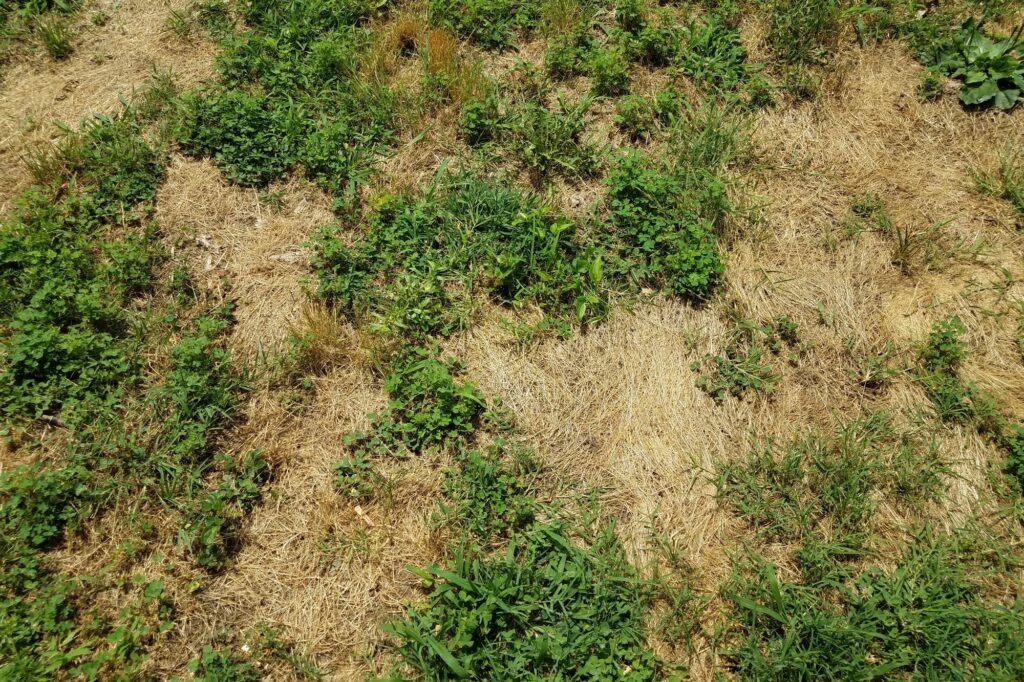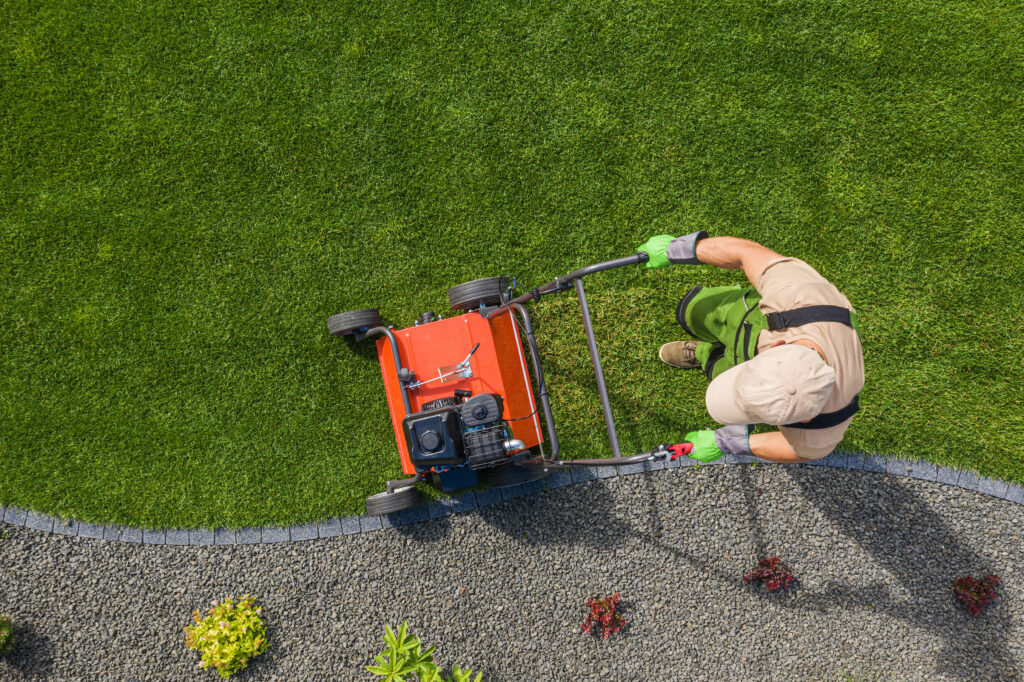
Taking care of your lawn, especially as spring begins, can be a time-consuming task. You may spend hours or days mowing, watering, and fertilizing in hopes of achieving a lush green lawn as the season progresses. But there is more you can do to help your lawn reach its full potential. Lawn aeration offers many benefits to homeowners, helping them achieve the lawn of their dreams. But why exactly do you need to schedule lawn aeration?
At Green Castle Lawn Care, we understand how difficult it can be to achieve the lawn of your dreams. A lot goes into nurturing your lawn so it can reach its full potential. Keep reading to learn more about why you should schedule lawn aeration and how it can help you achieve a lush, green appearance this spring.
The Importance of Aeration
Lawn aeration is an important part of lawn care. Over time, your soil may become compacted due to foot traffic, heavy machinery, and natural settling. This compaction can restrict the flow of air, water, and nutrients to your roots. Aeration alleviates this compaction by creating channels in the soil, allowing air, water, and nutrients to penetrate deeper and promoting root growth.
This process can enhance the overall health of your lawn, making it more resilient to stressors such as drought, disease, and excessive thatch buildup. By breaking up compacted soil, aeration also reduces runoff, allowing your water to absorb far more water than it once did. Ultimately, when you schedule lawn aeration from a professional, you foster an environment for lush, thick turf, ensuring your lawn looks beautiful all season long.
The Benefits of Aeration
1. Increased Water Absorption
Calling a professional to schedule lawn aeration plays a major role in improving water absorption by breaking up compacted soil, which acts as a barrier to proper hydration. Compacted soil prevents water from penetrating deep into the ground where grassroots can access it, leading to runoff and inefficient irrigation.
Aeration creates channels in the soil, allowing water to penetrate more effectively, reaching the root zone where it’s needed most. This promotes healthier root growth and enhances the lawn’s ability to withstand drought conditions, helping you achieve the lush, green grass you’ve been hoping for.

2. Enhanced Fertilizer Effectiveness
When you schedule lawn aeration, you enhance your fertilizer’s effectiveness by improving nutrient uptake in several ways. First, aeration alleviates soil compaction, which may have prevented fertilizer from penetrating deeper into the root zone where it can be absorbed. Second, it creates channels in the soil, allowing better distribution of nutrients and preventing them from being washed away.
Additionally, aeration promotes microbial activity in the soil, which aids in the breakdown of organic matter and the release of nutrients for plant uptake. Overall, lawn aeration ensures that fertilizers are utilized more efficiently, resulting in healthier, greener grass and reducing the need for excessive fertilization.
3. Improved Density
Aeration plays a major role in the density of your grass growth by addressing soil compaction and promoting robust root growth. Compacted soil restricts root development and prevents grass expansion, leading to sparse turf. By creating channels in the soil, aeration allows roots to penetrate deeper and spread more freely.
This encourages new growth, resulting in thicker, denser grass coverage. Additionally, improved air circulation and nutrient absorption from aeration stimulate overall plant health, further enhancing turf density. If you schedule lawn aeration, your lawn becomes more resilient to stressors and maintains a lush, uniform appearance that enhances the beauty of your outdoor space.
4. Reduced Soil Compaction
Aeration reduces soil compaction by mechanically loosening the soil and creating channels for air, water, and nutrients to penetrate deep into the ground. Compacted soil restricts root growth and inhibits proper drainage, leading to poor lawn health. Through aeration, plugs or cores of soil are removed, alleviating compaction and allowing your grassroots to expand more freely.
The aeration process improves soil structure, promoting better water infiltration and reducing runoff. Additionally, aeration stimulates microbial activity in the soil, aiding in the decomposition of organic matter and further loosening compacted layers. If you want to maintain healthy turf, it is essential that you contact a professional to schedule lawn aeration.

5. Improved Air Exchange
Aeration enhances air exchange in the soil by creating channels that allow oxygen to penetrate deeper, stimulating the root zone. Compacted soil limits oxygen availability, hindering root respiration and nutrient uptake, which compromises your overall turf health. When you schedule lawn aeration, these constraints are alleviated as soil plugs are removed, opening up pathways for enhanced air circulation.
Increased oxygen levels stimulate microbial activity, fostering nutrient cycling and organic matter decomposition. This process improves soil structure and promotes healthier root growth and vigor. Aeration revitalizes the soil environment, ensuring optimal conditions for lush, thriving turf all season long.
6. Promotion of Microbial Activity
Aeration promotes microbial activity in the soil by creating an oxygen-rich environment which is necessary for microbial growth and activity. Compacted soil limits oxygen availability, inhibiting microbial populations essential for nutrient cycling and organic matter decomposition. If you schedule aeration with a professional, you can alleviate soil compaction, allowing oxygen to penetrate deeper and stimulate microbial communities.
These microorganisms break down organic matter, releasing nutrients in forms readily available to plants. Additionally, microbial activity aids in disease suppression and soil structure improvement. By fostering a diverse and active microbial population, aeration can improve soil health, promoting nutrient availability for a lush, resilient lawn.
7. Reduced Thatch
Aeration effectively reduces thatch buildup by promoting the decomposition of organic matter on the surface of the soil. Thatch, a layer of dead grass, roots, and other organic debris, can accumulate over time, preventing water, air, and nutrients from reaching the soil and roots. When you schedule lawn aeration, plugs of soil are removed, creating channels for better airflow and microbial activity.
This aeration encourages microbes to break down thatch, resulting in its gradual decomposition. By aiding this natural process, aeration helps to keep thatch levels in check, promoting a healthier, more balanced lawn ecosystem. If you’ve noticed layers of dead grass compromising your lawn, this might be the perfect solution.

Schedule Lawn Aeration with Green Castle Lawn Care
If you want to schedule lawn aeration in Ogden, Utah, turn to our team at Green Castle Lawn Care. Our team has been providing lawn care services to homeowners across the area since 1999, and we’re confident that with our help, you can achieve the lawn of your dreams. In addition to our lawn aeration services, our team provides weed control, pest control, fertilization, and much more. If you are ready to schedule lawn aeration, don’t hesitate to contact our team today.
